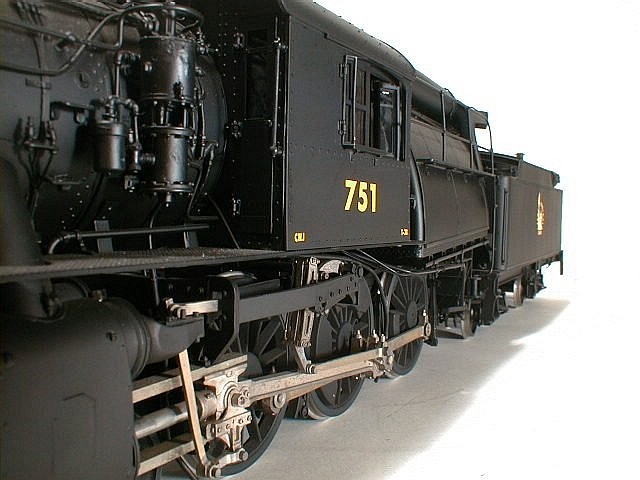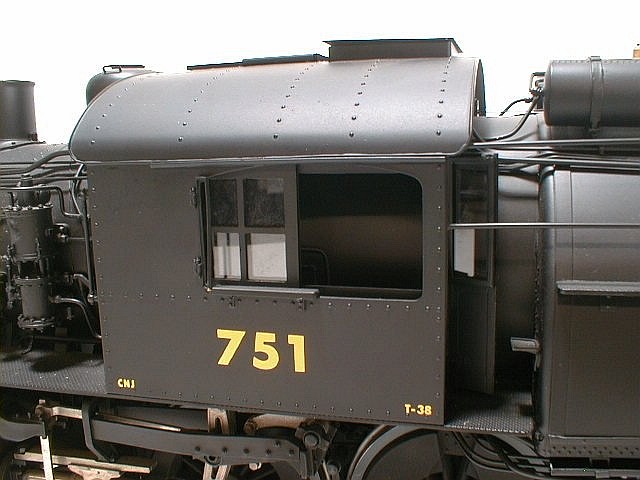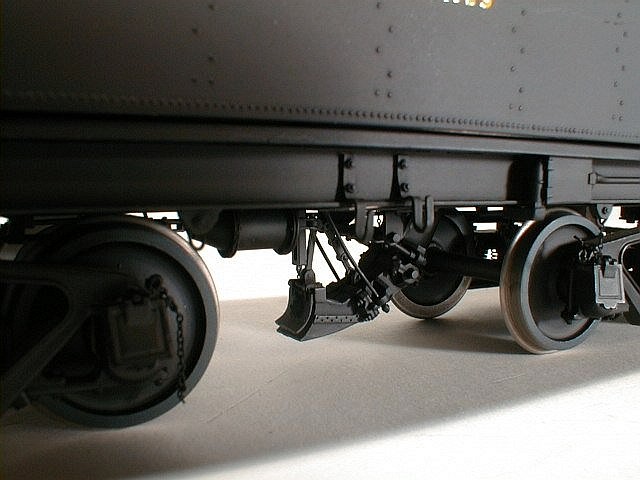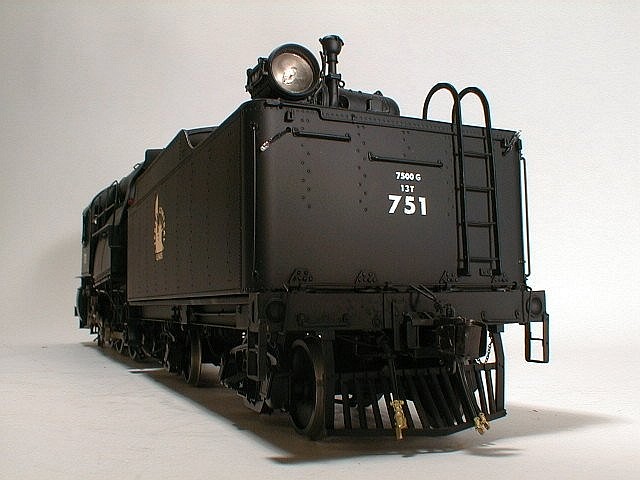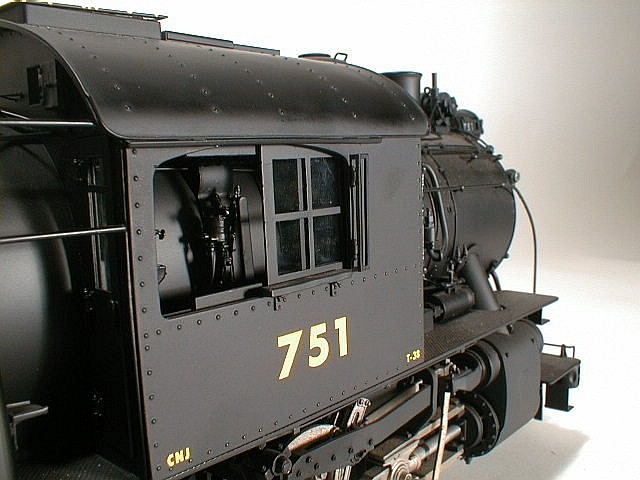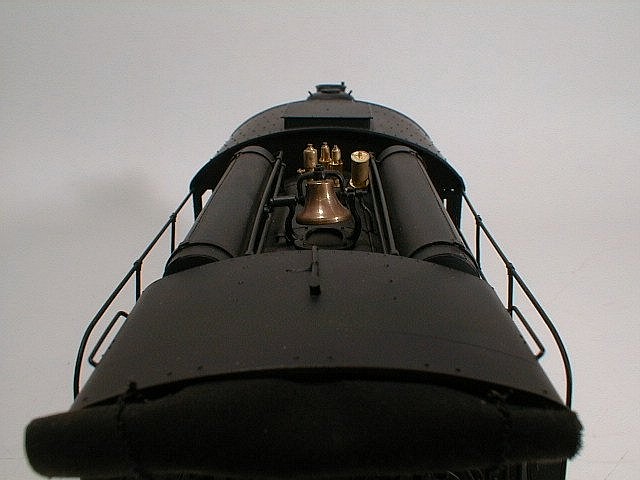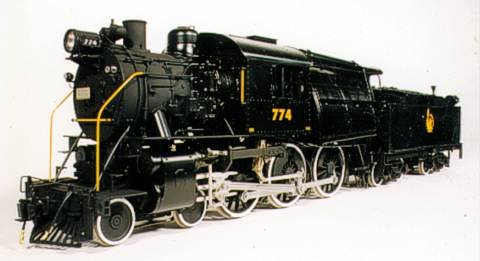Camelback
Jersey Central T-38 Camelback 4-6-0 – Freight
- Scale: 1:32
- Release: 1992
- Limited Edition: 10
- Model Size: 25”L x 4”W x 6.5”H
- Base Type: Mahogany
- Base/Case Size: 30”L x 9”W x 9”H
- Availability: Sold Out
Jersey Central T-38 Camelback 4-6-0 – Passenger
- Scale: 1:32
- Release: 1992
- Limited Edition: 20
- Model Size: 25”L x 4”W x 6.5”H
- Base Type: Mahogany
- Base/Case Size: 30”L x 9”W x 9”H
- Availability: Sold Out
Jersey Central T-38 Camelback 4-6-0 – N774, As Retired
- Scale: 1:32
- Release: 1992
- Limited Edition: 40
- Model Size: 25”L x 4”W x 6.5”H
- Base Type: Mahogany
- Base/Case Size: 30”L x 9”W x 9”H
- Availability: Sold Out
Jersey Central T-38 Camelback 4-6-0
One of the most unusual steam locomotive designs, as well as one of the most familiar despite the fact that none were built after World War I, originated as a solution to an interesting technical problem: the Camelback.
In the mid-19th century, coal-mining practices were much less efficient than they are today. Some 20 percent of Pennsylvania’s total anthracite output was regarded as waste too fine for general use, in light of its high shale content. While this culm could be used for heating buildings and other forgiving applications, it lacked the high heat content needed to power the locomotives of the day. John Wootten, later general manager of the Philadelphia & Reading, saw that such fuel might prove practical if burned on a sufficiently large grate. In 1877, the first locomotive with a wide Wootten firebox was completed. Six years later, 170 more such locomotives were in service. Together they saved the railroad almost $400,000 on its annual coal bill.
The Wootten firebox was so big that it left little room at the rear of the locomotive for a conventional cab. The solution was to arrange a separate cab for the engineer astride the boiler, with a smaller deck for the fireman remaining in the traditional position between the firebox and tender. However, this camelback design, also known as the Mother Hubbard, had drawbacks. Their engineers worked in a hot, cramped environment – so hot and so cramped, that even in winter, they preferred to sit on the window sill. Some even fell out, which led to the invention of the dead man’s pedal. Even when they stayed put, engineers could be exposed to steam leaks and broken side rods and had no easy escape route in an emergency. In 1918, the Interstate Commerce Commission banned further construction of Camelbacks.
In their heyday, camelbacks appeared in many wheel arrangements and were used in all types of service. More than 3,000 were built, the best-known of which served on the Central Railroad of New Jersey (CNJ) and its parent Reading Railroad, with which it exchanged motive power. The Jersey Central’s best-known operations were at its Communipaw Engine Terminal in Jersey City, which at one time or another served as a base for 0-6-0, 0-8-0, 2-6-0, 4-4-2, 4-6-0 and 4-8-0 camelbacks. The road acquired few new steam locomotives between 1918 and 1930 and none thereafter, so even on the eve of dieselization in 1945 there were 198 camelbacks among the 368 steam locomotives on CNJ’s roster.
The 700-series 4-6-0s were CNJ’s most famous of these. They included classes L-6a of 1910, L-7 and L-7a of 1913–1914, and L-8 of 1918, which were collectively re-designated class T-38 in 1945. They started their careers in fast freight service with footboard pilots, but after they proved excellent in commuter passenger service, they became the sole power used between Jersey City and Dunellen, NJ in their last years.
The last run of a camelback came on September 24, 1955, last of a steam excursion, when No. 774 ran a round trip from Jersey City to Jim Thorpe, PA, on the Lehigh River. By March of the following year, all had been scrapped except for one which today remains on display in Baltimore.
Fine Art Models
In 1992, Fine Art Models introduced the T-38 camelback as its second Gauge 1 steam locomotive model. Our limited edition included both freight and passenger versions plus a final version of No. 774.
References
Carleton, Paul, The Jersey Central Story; River Vale, New Jersey, D. Carleton Rail Books, 1976
